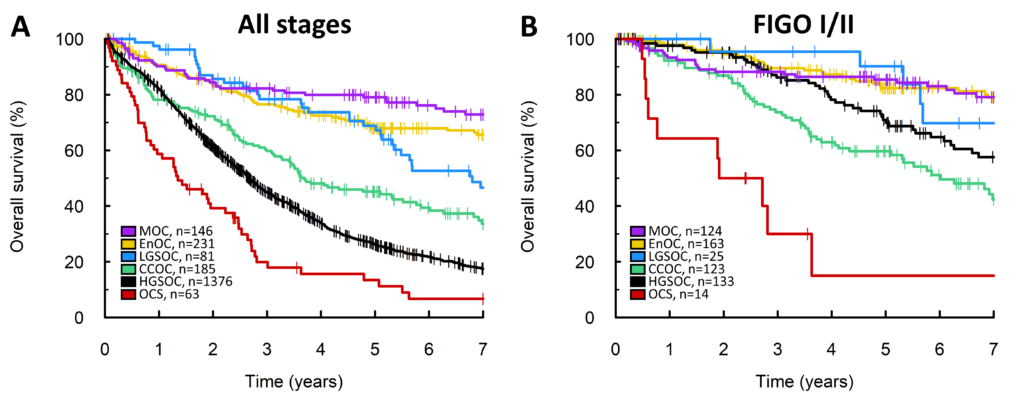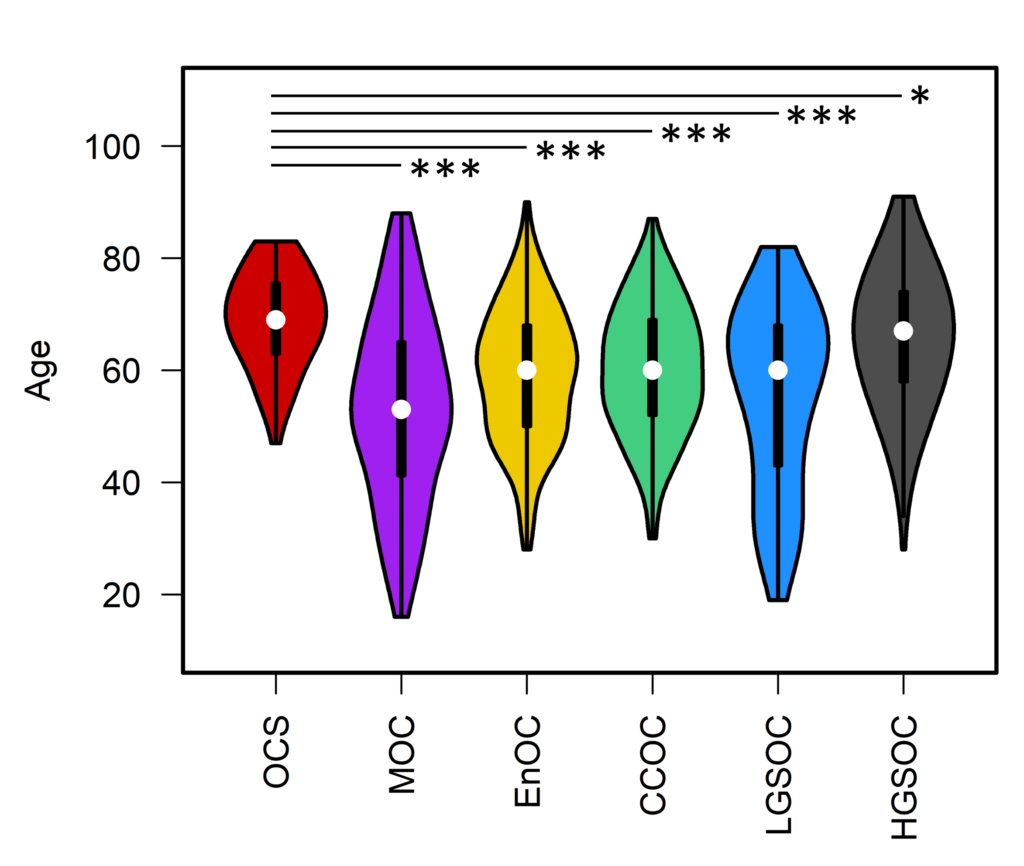Ovarian carcinosarcoma – an exceptionally aggressive form of ovarian cancer

By Dr Robb Hollis
Ovarian cancer
‘Ovarian cancer’ is really an umbrella term for a collection of different cancers that we detect at or around the ovary. While we used to think these all represented the same disease, we now know that there are multiple different types of ovarian cancer that each display unique clinical and biological characteristics. Each type has differences in appearance, treatment responsiveness, aggressiveness, characteristic gene mutations, and overall patient survival.
Ovarian carcinosarcoma
Ovarian carcinosarcoma is an unusual type of ovarian cancer that accounts for only around 1 in 20 diagnoses. Carcinosarcoma has a very distinct appearance, showing two very different looking populations of cancer cells. Both the rarity and unusual appearance of carcinosarcoma have led researchers to put carcinosarcoma to one side in the past, excluding it from many ovarian cancer studies. This has severely limited our understanding of the biology and clinical behaviour of carcinosarcoma compared to other ovarian cancers.

Figure 1. Survival of patients with different types of ovarian cancer. (A) Shows the survival of all patients; carcinosarcoma patients are in red. The black line is the most common type of ovarian cancer (called ‘high grade serous). Other colours represent other uncommon ovarian cancer types. (B) Shows the same data, but only for patients diagnosed with early stage disease, where the cancer has not spread throughout the pelvis.
Frontiers study
We recently reported a study in Frontiers looking at a large number of patients with carcinosarcoma to characterise its clinical behaviour, specifically comparing carcinosarcoma to the other major types of ovarian cancer to contextualise our findings. We used two cohorts of patients: a primary cohort from Edinburgh, supported by a second cohort from the SEER database in the US.
We show that carcinosarcoma is exceptionally aggressive compared to all other types of ovarian cancer. The difference against other types is particularly striking when looking at patients whose disease is at a relatively early stage at presentation (i.e. when cancer has not already spread from the ovary throughout the pelvis, which we call ‘stage 2’). In this context, only 10-15% of carcinosarcoma patients were alive 5 years after diagnosis, compared to ≥60% of patients with other types of ovarian cancer.
We also show that the carcinosarcoma patient population is quite different to that of other ovarian cancer types, representing an older patient population. Our findings replicated well in the second cohort of patients from the SEER database, increasing the confidence in our conclusions.

Figure 2. Carcinosarcoma patients (in red) are usually diagnosed in older patients compared to other ovarian cancer types. The most common ovarian cancer type (called ‘high grade serous’ is shown in black), alongside other types in various colours.
Long-term goal
Together, our study highlights carcinosarcoma as a distinct, highly aggressive form of ovarian cancer. New therapies are urgently needed to improve the outcomes of these patients, and additional laboratory research is desperately needed to better characterise the biological drivers of this disease.
The long-term goal would be to translate this biological understanding into molecular therapies that can improve the survival of carcinosarcoma patients.
My laboratory recently published the first comprehensive molecular analysis of carcinosarcomas in the British Journal of Cancer, using samples from a small group of carcinosarcoma patients, so we are already making steps toward this goal.
Read the British Journal of Cancer paper



